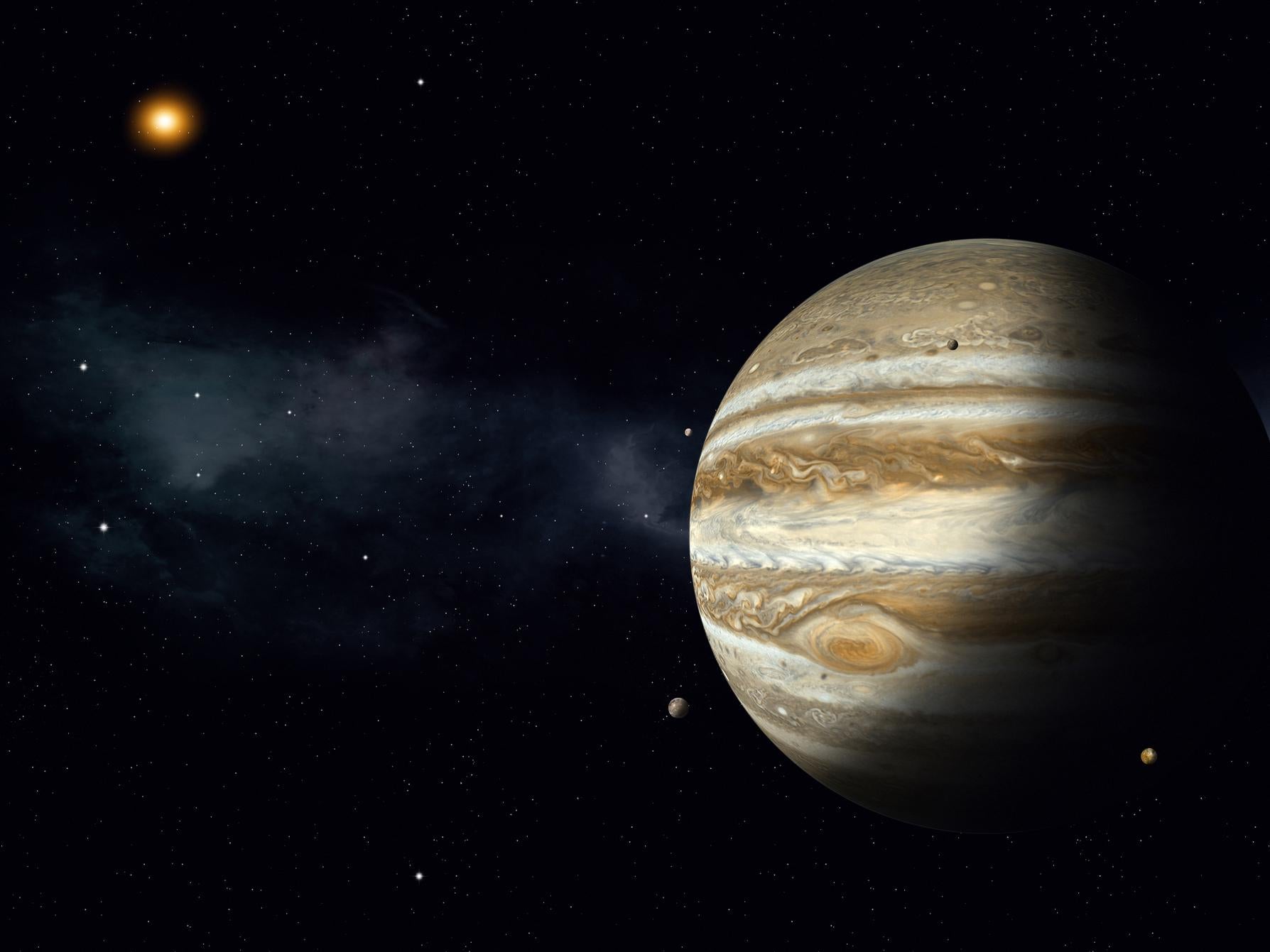Jupiter and Mars to appear side-by-side in ‘uncommonly beautiful’ cosmic event on Sunday
Stargazers will have a chance to view rare celestial phenomenon early in the morning

The planets Jupiter and Mars will appear side-by-side in the sky on Sunday morning, in a cosmic event described as "uncommonly beautiful".
Though the planets are more than 350 million miles apart, for a brief period they will appear as if they are orbiting the Sun close together – giving them the appearance of “very bright stars”.
During this time, Jupiter will shine about 20 times brighter as seen from Earth.
The cosmic event will be visible to the naked eye at around 3.40am, as long as there are clear skies, but the pair will be extremely low on the southern horizon.
Juno's pictures of Jupiter's great red spot
Show all 4In total, viewers will have around five hours to enjoy the spectacle before sunrise.
According to astronomer Tom Kerss, of the Royal Observatory Greenwich, the best time to observe the celestial event in the UK will be between 6.30am and 7am, when the planets “will be about 20 degrees above the horizon due south”.
He added: “They should remain clearly visible even as the dawn twilight begins to emerge.
“The planets will initially appear straight down in a vertical line with Jupiter above and Mars underneath, but as they move apart they will appear as a diagonal line, with Jupiter on the top left and Mars on the bottom right.”
Despite being more than 369 million miles apart, the planets will appear to be very close together, forming a nearly straight line with the Earth – an event known in astronomy as a syzygy.
Mr Kerss said: “At just a fraction of a degree apart in the sky, you’ll be able to cover both of them easily using the tip of your little finger on an outstretched arm.”
What's the best way to see the cosmic event?
For skygazers wanting to see the planets, Mr Kerss advised making sure the southern view is not obscured by buildings or trees.
He said: “The two planets will be unmistakable as apparently very bright stars, with Mars showing a pronounced orange colour against the pale yellow-white Jupiter.
While conjunctions are not uncommon, Mr Kerss says the planets’ close approach will be “uncommonly beautiful, particularly when they appear so bright or show colour”.
The last time Mars and Jupiter appeared together this closely was in January 1998, and the next time will not be until March 2020.
Additional reporting by PA
Subscribe to Independent Premium to bookmark this article
Want to bookmark your favourite articles and stories to read or reference later? Start your Independent Premium subscription today.

Join our commenting forum
Join thought-provoking conversations, follow other Independent readers and see their replies